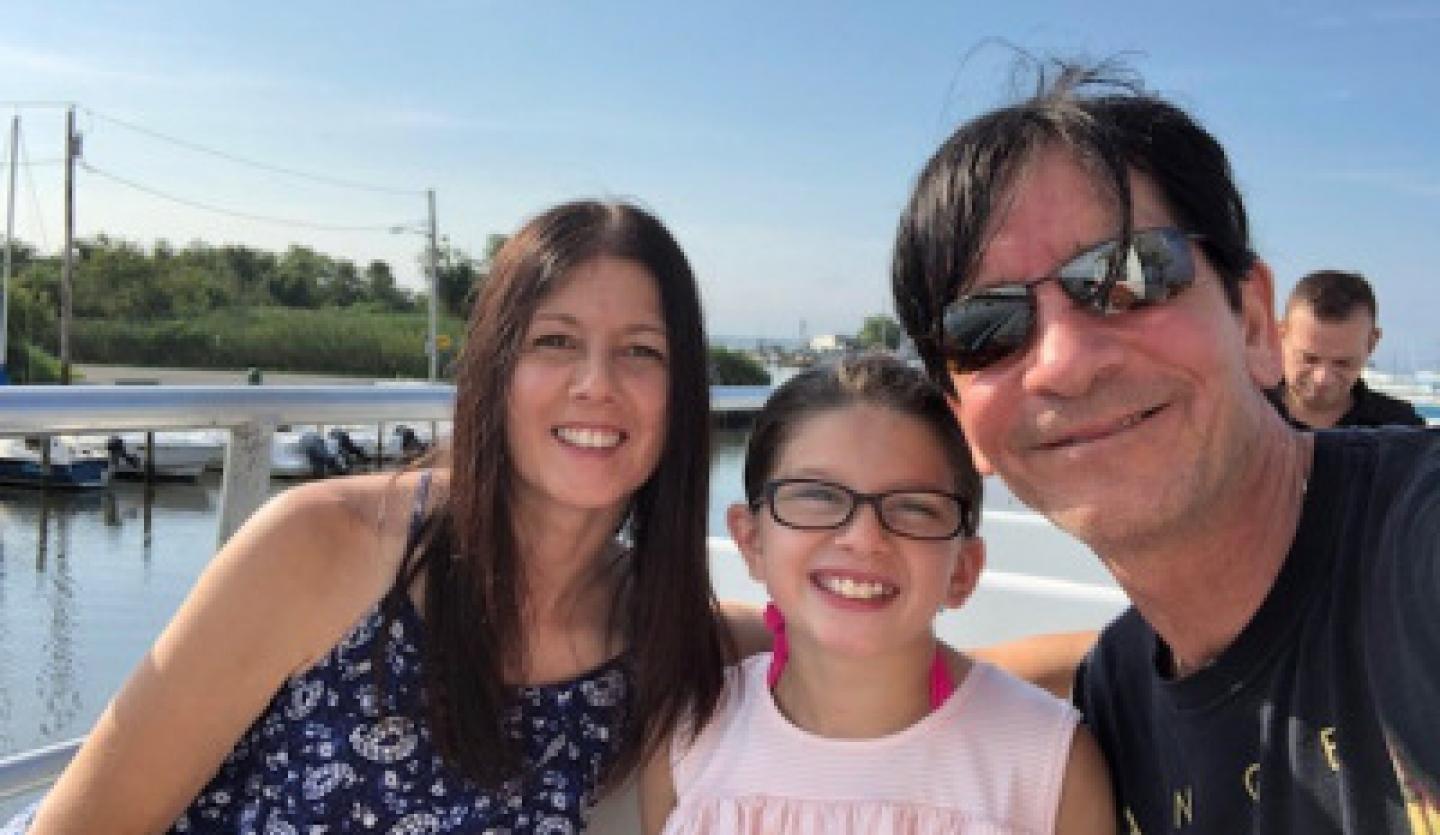The past two years have been a difficult journey for 51-year-old Lisa Rivas. In the blink of an eye, she went from being an active mom juggling a full-time job, a home and a family, to a woman who was debilitated by pain and unable to do any of the things she loved. On her long road to recovery, she also became a medical pioneer. As a patient of Salvatore Zavarella, MD, a spine surgeon at Good Samaritan Hospital, Lisa became one of the first patients in the nation to undergo an innovative, minimally invasive surgical procedure to repair a fractured lumbar spine.
Before the October 2019 automobile accident that changed her life, Lisa had enjoyed excellent health. She worked as a nurse and an EMT and loved spending time with her 11-year-old daughter, Jamie.
The impact of the rear-end collision while she was stopped at a red light on her way to pick up her daughter from school left her with injuries to her shoulder and lower back so severe that both would require surgery. The force with which her body hit the steering wheel left Lisa with a torn bicep, damaged shoulder ligaments and a clavicle injury. Doctors decided to focus on the shoulder repair first, while attempting conservative measures to address her back and leg pain.
No longer able to work as a health care provider, Lisa learned first-hand what it is like to be the patient. She underwent physical therapy and pain management consultations to cope with pain in her lower back and legs, along with inflammation, numbness and tingling in her legs, and constant headaches. In time, it became clear that spine surgery would be unavoidable.
Fortunately, she found Dr. Zavarella, one of only a handful of surgeons in the nation selected to pioneer a new, minimally invasive approach for the type of surgery Lisa required.
“She had a spondylolisthesis fracture where one vertebra was slipping forward over the one below it,” said Dr. Zavarella. “Once the condition developed, there were no conservative measures that would have allowed her to return to her normal activity level. Instead, she had to have the fracture stabilized and the bones realigned so they could heal.”
Because of Dr. Zavarella’s experience performing complex spinal surgery, he has become a recognized leader in deploying emerging surgical techniques and new devices. The traditional approach to Lisa’s surgery requires that the patient lay on their side to allow the surgeon to remove the damaged disc and insert a spacer in its place. The patient is then flipped onto their back for the placement of stabilizing screws and rods. With the new method, the patient remains in one position: face down, or prone, for the duration of the surgery.
“This procedure is revolutionary,” said Dr. Zavarella. “Surgical time is reduced by 45 minutes to just one hour. Lisa did very well and was able to be discharged from the hospital within a couple of days.”
A quicker surgical procedure has significant benefits for the patient. They require less anesthesia, experience less blood loss, and typically recover faster.
“Overall, it is a safer procedure,” Dr. Zavarella affirmed. He explained that the minimally invasive approach requires a high degree of surgical proficiency and advanced capabilities. He credited the skill and expertise of the entire surgical team at Good Samaritan with enabling him to safely introduce this new technique. As one of the first handful of surgeons able to perform this procedure, in the future he will be involved in training others.
Lisa relied on her familiarity with the healthcare system to research and find the team that would help put her back on her feet. As an EMT, her job was to bring sick and injured patients to hospitals across Long Island. With that perspective and background, she specifically chose Good Samaritan for her surgery.
“I handpicked Dr. Zavarella through recommendations and research,” she said. “He and the whole team were amazing. They communicated clearly and effectively about my care plan while I was in hospital. And it didn’t stop just because I went home; they followed up and continued to provide quality care even after I was discharged.”
Knowing that she was one of the first patients to undergo this new approach was, in Lisa’s book, “amazing.” As she continues her journey back toward a pain-free life, she is looking forward to doing the things she loves: watching her daughter participate in gymnastics meets, visiting the beach and water parks with her family, and returning to work with a greater appreciation of how it feels to be a patient.

